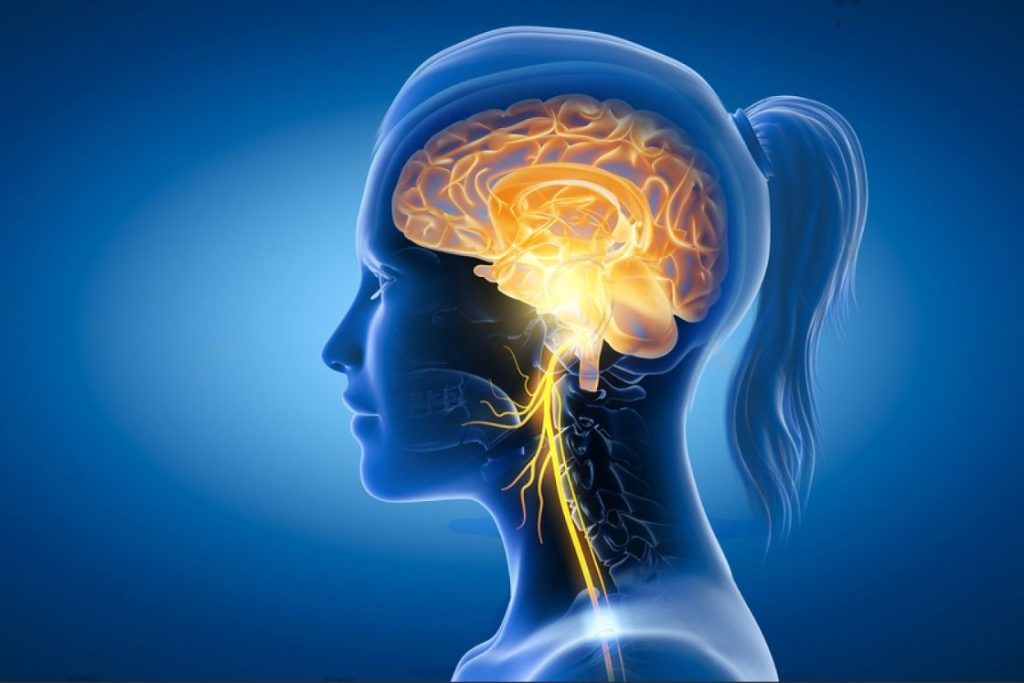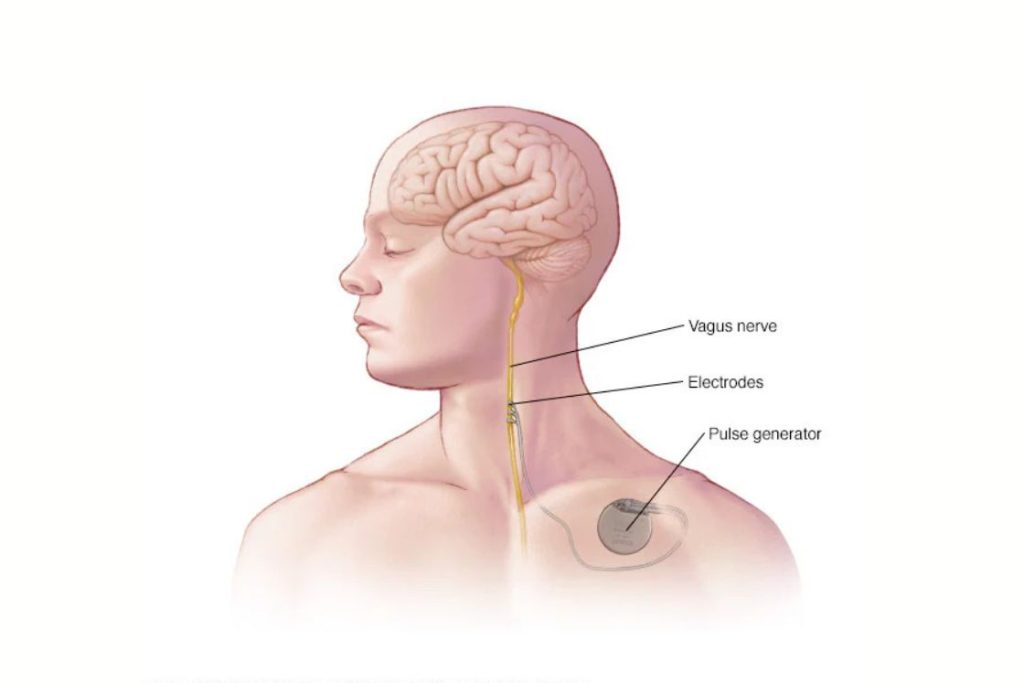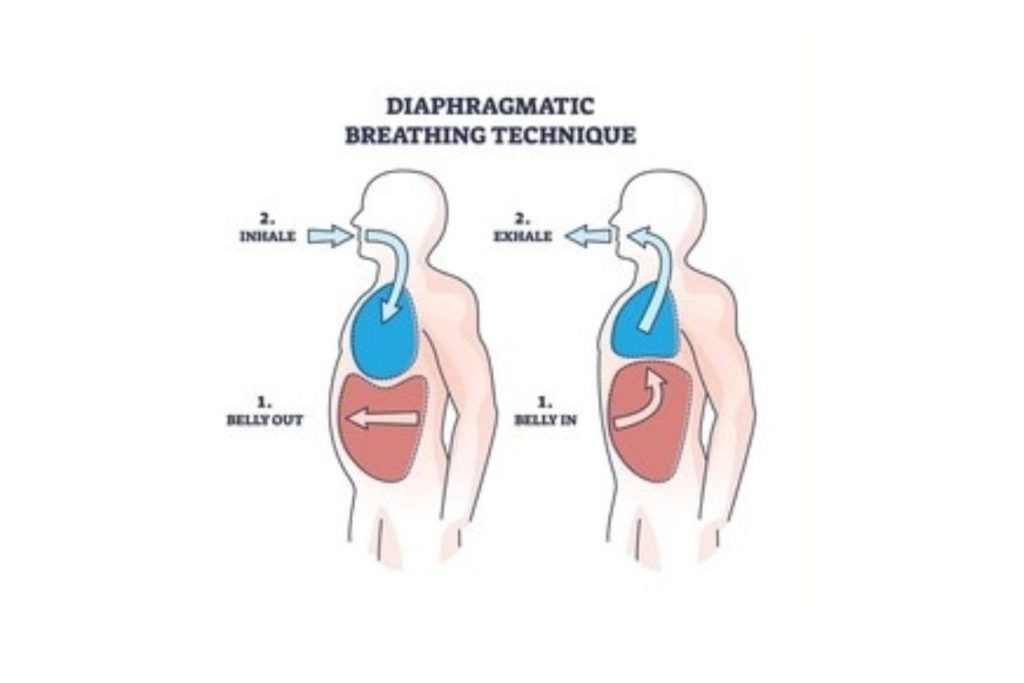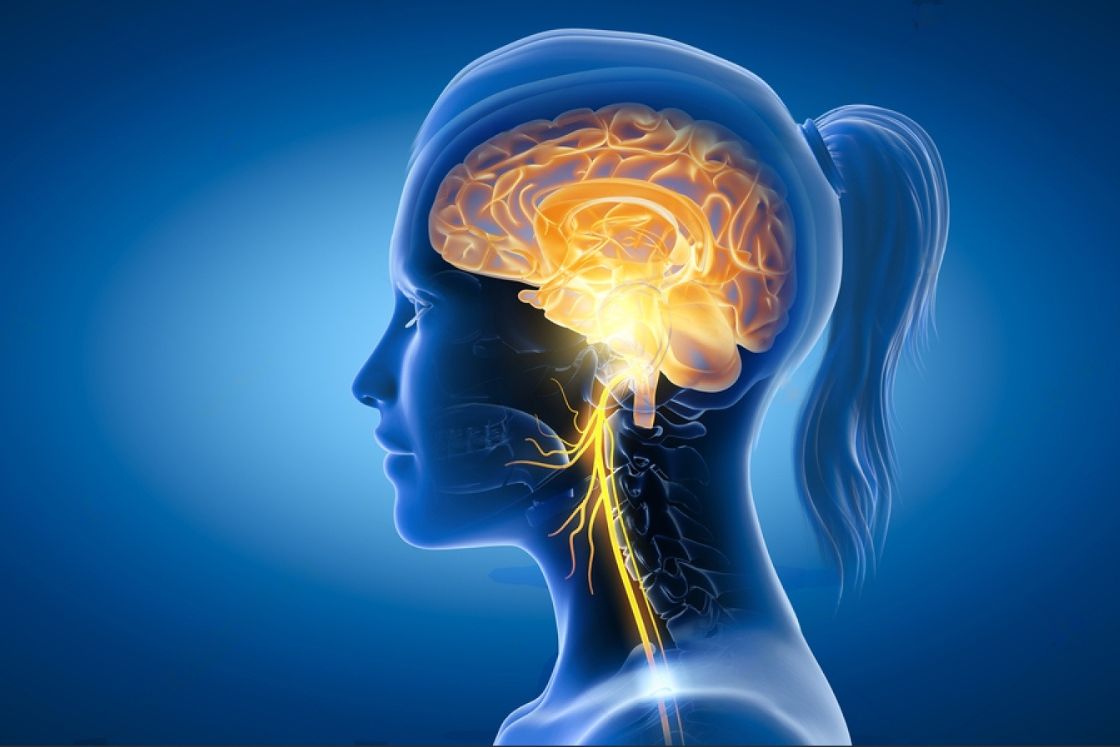
On the coronary heart of our intricate nervous system lies the Vagus nerve, a meandering powerhouse that begins within the mind and threads its means all the way down to the stomach. However what makes it so particular?
The Vagus nerve is basically the physique’s communication superhighway, connecting the mind to many important organs comparable to the center, lungs, and intestine. It performs a pivotal position in regulating our inner setting, making certain we operate harmoniously. Its affect on our well-being is profound, which makes understanding it important for anybody serious about holistic well being.
Yoga, an historical follow that transcends time and tradition, not solely strengthens our our bodies and calms our minds but additionally has deep-rooted connections with our nervous well being, particularly the Vagus nerve.
Whereas we align our poses and give attention to our breath, there’s a silent, stunning interplay going down inside, the place the rhythms of our breath can harmonize with the Vagus nerve’s features. It’s a profound union of physique, thoughts, and internal physiology that types the core essence of yoga’s profit to our nervous system.
Advantages of Positively Stimulated Vagus Nerve:
- Temper Regulation and Melancholy Alleviation
- Improved Cardiac Well being and wholesome Coronary heart Charge Variability
- An optimized respiratory system
- A Contented Intestine: Enhanced Digestion and Intestine Well being
- An environment friendly excretion administration
- Enhance in Immune Perform
Anatomy and Perform of the Vagus Nerve

- The Vagus Nerve’s Journey: From Mind to Stomach
Let’s start by visualizing the intricate path of the Vagus nerve. Originating from the bottom of the mind, this exceptional nerve, the longest of our cranial nerves, begins its descent. Like a mild river that winds its means by means of the panorama, the Vagus nerve gracefully programs down our neck, passing by means of the chest, and eventually reaching deep into our stomach. Its expansive attain is testomony to its indispensable position in our physique.
- The Calming Conductor: The Vagus Nerve within the Parasympathetic System
Within the grand orchestra that’s our nervous system, consider the Vagus nerve because the conductor of the calming melodies. It’s a main element of the Parasympathetic Nervous System, usually fondly known as the “relaxation and digest” system. When life’s tumultuous tempo overwhelms us, it’s this technique, led by the Vagus nerve, that whispers, “It’s okay to pause, to loosen up, to revive.” It’s our built-in antidote to emphasize, making certain that we stay balanced amidst life’s challenges.
- A Mediator of Important Capabilities: The Vagus Nerve’s Position in Our Organs
Now, let’s delve deeper into the multitude of obligations the Vagus nerve shoulders. Image your coronary heart, steadily beating, setting the rhythm for all times. The Vagus nerve performs a task right here, subtly regulating our coronary heart fee. Journey additional all the way down to the abdomen, and also you’ll discover the Vagus nerve once more, making certain our digestion runs easily, processing the nourishment we absorb.
However that’s not all. Its tendrils unfold out, connecting with the lungs, aiding in our respiration; with the kidneys, influencing filtration; and even with our vocal cords, enjoying a task in our voice modulation. Really, the Vagus nerve is not only a nerve, however a lifeline, binding collectively varied organs, making certain they operate in concord, reflecting a holistic method to our well-being.
In appreciating the Vagus nerve’s vastness and capabilities, we acknowledge the fragile, interconnectedness inside our physique. It’s a reminder that each half, each operate, is intertwined, underpinning the profound fact that holistic well being isn’t only a idea, however a residing, respiration actuality inside us.
Vagus Nerve, a key element within the Autonomic Nervous System
The Vagus nerve, or cranial nerve X, is a key element of the parasympathetic division of the autonomic nervous system (ANS). The ANS, as you recognize, is chargeable for regulating involuntary physiological features, and it contains two main branches: the sympathetic (“combat or flight”) and parasympathetic (“relaxation and digest”) nervous techniques.
- Chemical Messages and How They Work
Each communication inside our physique depends on a collection of chemical messengers. The first messenger for the Vagus nerve is acetylcholine. When this chemical is distributed out, it matches into particular spots (known as receptors) on our organs. Image it like a puzzle piece becoming completely into its spot. This connection sends a sign, which leads our physique to hold out sure actions, like stress-free or digesting.
Our coronary heart has a pure rhythm. The Vagus nerve instantly connects to the center and, like a conductor with an orchestra, it helps set the tempo. By releasing acetylcholine, the Vagus nerve tells the center to take a relaxed tempo, making certain we’re not all the time in excessive gear. This not solely conserves our vitality but additionally makes digestion extra environment friendly.
- Digestion’s Useful Hand
Past the center, the Vagus nerve is sort of a management heart for our abdomen and intestines. It ensures that meals strikes easily, type of like how a conveyor belt operates. Moreover, it indicators for the discharge of digestive juices. This ensures that no matter we eat is damaged down correctly, giving our physique the vitamins it wants.
For our lungs, the Vagus nerve acts as a mild regulator. Whereas its essential job isn’t about respiration, it gives a counterbalance to the physique’s stress reactions. It’s like having a chilled voice amidst chaos, making certain there’s all the time a steadiness between pleasure and rest.
- Detecting and Decreasing Irritation
One of many lesser-known however equally spectacular roles of the Vagus nerve is its skill to sense irritation. Consider irritation because the physique’s alarm system when issues go fallacious, like when there’s an damage. When the Vagus nerve picks up on these alarms, it communicates with the mind. The mind then sends indicators by means of the Vagus nerve to the affected space, working to dial down the irritation. It’s a bit like our physique’s pure firefighter.
- The Nerve’s Particular Sensors
To higher perceive our physique’s wants, the Vagus nerve comes geared up with tiny sensors. These are its mini detectives, choosing up on modifications like stretch or acidity ranges. It’s the nerve’s means of staying knowledgeable about how completely different components of our physique are feeling and functioning.
Yogasanas and the Vagus Nerve

After we step onto our yoga mats and transfer by means of the completely different postures, we aren’t solely shifting our muscle tissues and joints, however a deeper connection is going down. Every yoga posture, or asana, harmonizes our bodily, psychological and energetic realms in a singular means. A few of these asanas, maybe surprisingly, have a profound impact on the vagus nerve.
Take, as an illustration, the straightforward act of lifting the chest and arching the again in a posture just like the Cobra or Bhujangasana. Right here, by opening up the entrance of the physique, we subtly therapeutic massage the organs, not directly stimulating the Vagus nerve and fostering a way of internal calm. In distinction, ahead bends, comparable to Paschimottanasana, compress the stomach, once more massaging the interior organs and providing a mild nudge to the Vagus nerve.
- Deep Diaphragmatic Respiratory and the Vagus Nerve

As we transition from one posture to a different, a aware yogic follow additionally emphasizes the breath. However this isn’t simply any breath; it’s deep, diaphragmatic respiration. By guiding our breath deep into the diaphragm, quite than shallowly within the chest, we interact in a good looking stimulation of the Vagus nerve.
This deep-breathing method acts as a balm, activating the nerve and signaling the physique to loosen up and unwind. Every inhalation stretches the diaphragm, and each exhalation releases rigidity, collectively sending soothing waves all through the nervous system. By way of this breath, we’re not merely oxygenating our cells; we’re nurturing our very essence, emphasizing the holistic embrace of yoga.
- Neck Stretches: The Direct Pathway to the Vagus Nerve

There’s a sure class in how particular yoga postures goal the neck. Take into account the light tilting in poses like Matsyasana (Fish Pose) or the rotation in Ardha Matsyendrasana (Half Spinal Twist). These aren’t simply stretches for flexibility’s sake; they maintain a deeper secret.
The neck homes a good portion of the Vagus nerve. By mindfully stretching and compressing this space in varied yoga postures, we provide direct stimulation to the nerve. This connection gives a potent instrument within the yogi’s arsenal, permitting them to harness the advantages of the Vagus nerve’s calming affect extra profoundly.
Pranayama (Respiratory Strategies) and the Vagus Nerve

Within the coronary heart of yoga’s huge ocean of data is Pranayama, a set of respiration strategies designed to harness, steadiness, and elevate our life pressure or ‘prana‘. Whereas these practices have been handed down by means of millennia, trendy science now unveils the profound connections between Pranayama and our Vagus nerve.
- Respiratory Workout routines that Awaken the Vagus Nerve
Among the many many Pranayama strategies, there are particular ones that stand out of their skill to the touch and activate the Vagus nerve.
Nadi Shodhana or Alternate Nostril Respiratory is an efficient instance. Sitting in quiet reflection, a practitioner inhales deeply by means of one nostril whereas the opposite is gently closed, then switches. This conscious interaction of breath not solely calms the thoughts but additionally harmonizes the 2 hemispheres of the mind. In doing so, it not directly sends indicators to the Vagus nerve, fostering rest and steadiness.
One other good instance is deep stomach respiration. This system is all about drawing the breath deep into the stomach, feeling the diaphragm stretch and the stomach increase. It’s a easy act, however its results are profound. By participating the diaphragm so instantly, we therapeutic massage inner organs, stimulate the Vagus nerve, and beckon the calming waves of the parasympathetic response.
- Acutely aware Respiratory and Vagal Tone
So how do these practices intertwine with the Vagus nerve’s performance? Let’s journey into the science behind it.
After we interact in these particular respiration strategies, particularly deep stomach respiration, we’re actively stimulating the diaphragm. This muscle, when stretched, gives light stress on the Vagus nerve, which runs shut by. In consequence, the nerve is activated, and it sends indicators to the mind to launch neurotransmitters that promote rest and scale back stress.
Moreover, deliberate and centered respiration fosters a rhythmic coronary heart fee. The Vagus nerve displays this rhythm carefully. When the rhythm turns into coherent and balanced, because of our breathwork, the Vagal Tone is improved, indicating a more healthy and extra responsive Vagus nerve.
Pranayama, due to this fact, turns into greater than a mere follow; it’s a bridge. A bridge that connects historical knowledge with trendy understanding, a bridge that leads us to holistic well-being. As we breathe deeply, rhythmically, and with intention, we’re not simply nourishing our physique; we’re touching the very essence of calm, steadiness, and rejuvenation, guided silently by the Vagus nerve’s embrace.
Meditation, Mindfulness, and the Vagus Nerve

Embark on a journey into any conventional meditation area, and also you’re more likely to be greeted with the deep, harmonizing sounds of chanting or buzzing. These sounds, particularly the revered “Om” in yoga, should not simply spiritually uplifting; they maintain a profound reference to our Vagus nerve.
After we chant, hum, or sing, vibrations reverberate by means of our physique, significantly resonating inside the throat and chest. This sound-based vibration is a mild therapeutic massage for the Vagus nerve, which travels by means of the neck. Chanting “Om” or different mantras produces a frequency that appears to align harmoniously with the pure frequency of the physique, selling rest and tranquility.
Furthermore, the act of extended exhalation throughout chanting helps deepen our breath, additional activating the Vagus nerve. So, the following time you’re enveloped within the heat embrace of an “Om” chant, bear in mind, it’s extra than simply sound; it’s the track of holistic well-being.
- Mindfulness: A Mild Embrace for the Vagus Nerve
Mindfulness, at its core, is about being current, deeply tuned into the second, with out judgment. It’s a state of attentive grace that, whereas refined, has profound implications for our internal well being.
When practising yoga or meditation, the journey of mindfulness is usually a potent instrument for Vagus nerve stimulation. Right here’s how: Stress, nervousness, and fixed rumination activate our sympathetic nervous system, our physique’s “combat or flight” response. Nonetheless, by anchoring our consciousness within the current — be it on the breath, physique sensations, or the ambient sounds — we shift the steadiness in direction of the parasympathetic system, the place the Vagus nerve performs its calming position.
Common mindfulness practices practice our mind and physique to entry this rest response extra readily. By merely being current, observing with out judgment, we create an setting for the Vagus nerve to thrive, selling higher Vagal Tone and total well-being.
Conclusion | The Path of Prudence: Who Ought to Tread Cautiously?
For a lot of, yoga is a sanctuary, an area of peace and rejuvenation. However there are souls for whom sure yogic practices require extra discernment. When you’ve got a pre-existing coronary heart situation, respiratory points, or any neuro-related challenges, it’s important to method particular postures and respiration strategies with warning.
Folks with circumstances like bradycardia (an unusually gradual coronary heart fee) or these on sure medicines influencing coronary heart rhythms may expertise amplified results when attempting to stimulate the Vagus nerve. Equally, people with a historical past of extreme respiratory circumstances ought to method respiration workout routines, significantly people who contain breath retention, with care.
This isn’t to say yoga is off-bounds. Removed from it. However it’s a mild nudge in direction of searching for skilled steerage, maybe consulting with a healthcare supplier and an skilled yoga teacher earlier than diving deep. The confluence of medical information with historical yogic knowledge ensures that the journey stays secure, customized, and profoundly enriching.
Embarking on the trail of yoga and Vagus nerve stimulation is akin to wandering by means of a forest, the place each tree, each bend, holds a lesson. It’s about embracing the wonder but additionally being conscious of the challenges. With a contact of warning, a touch of knowledge, and the guiding hand of experience, the journey turns into not simply secure however transformative, resulting in the very coronary heart of holistic well-being.


